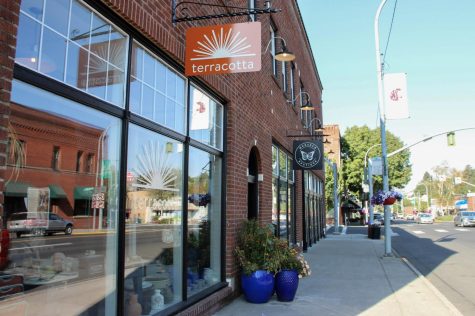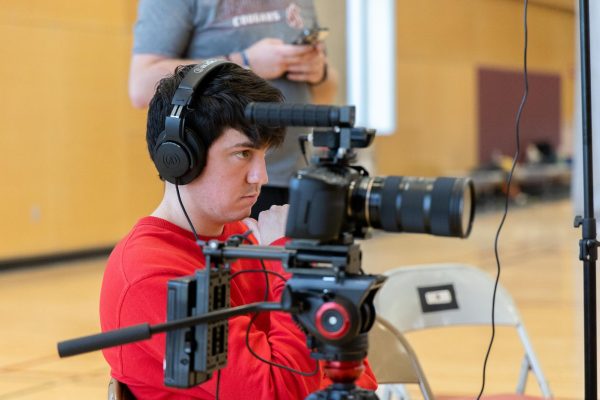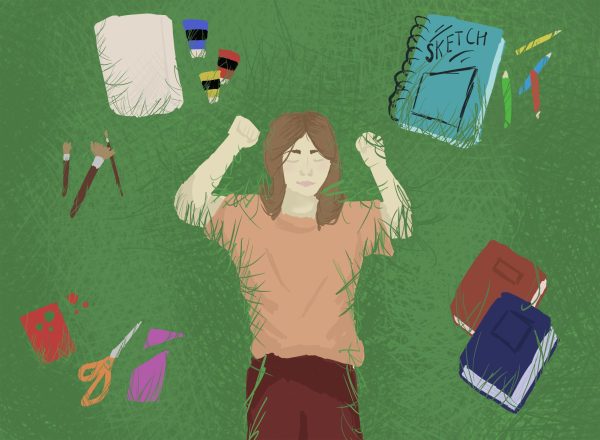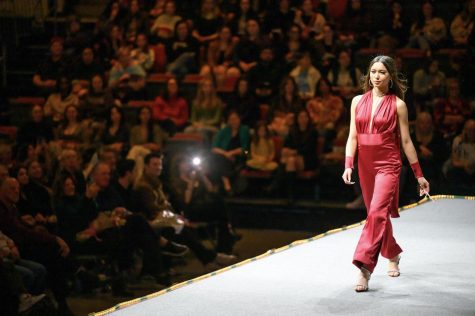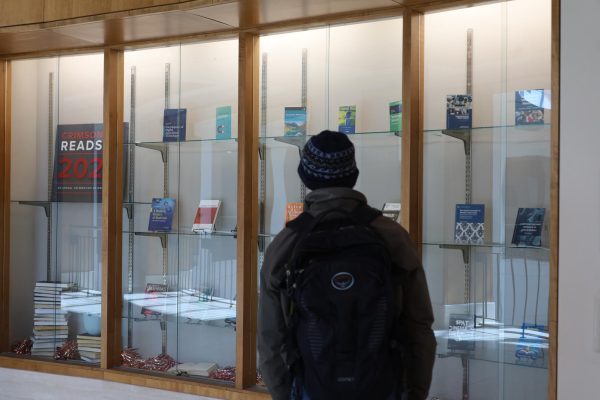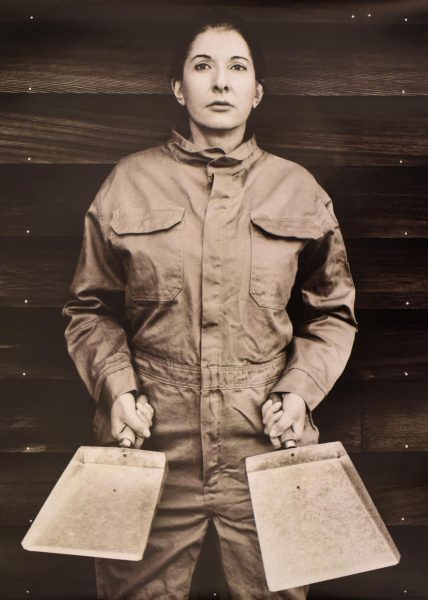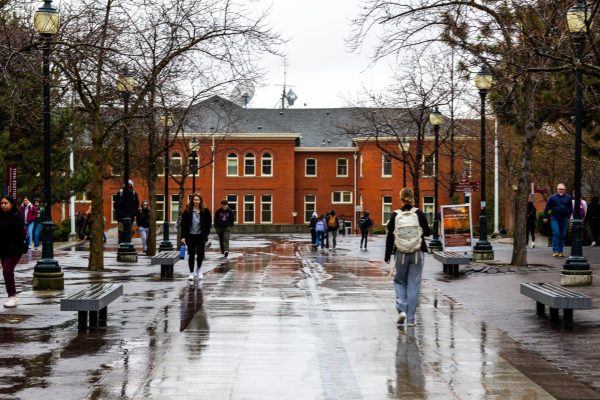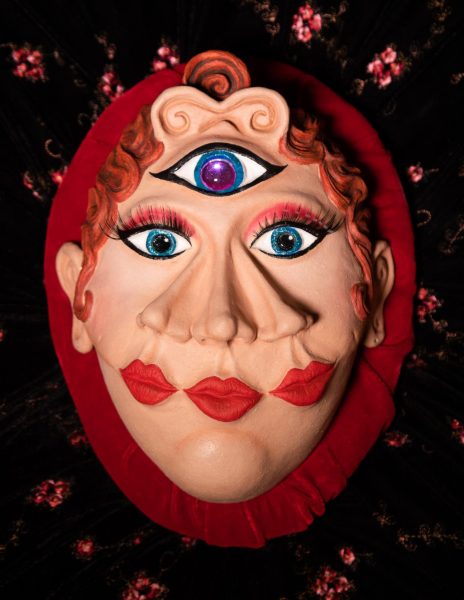What Was Always Yours and Never Lost: Films of the Indigenous American experience
Jordan Schnitzer Museum of Art hosting exhibition of films by Indigenous American artists until June 30
Caroline Monnet’s “Gephyrophobia” on display at the Jordan Schnitzer Museum of Art, May 16.
May 18, 2023
What Was Always Yours and Never Lost.
This is the title of the exhibition on display at the Jordan Schnitzer Museum of Art, which features films by Indigenous artists from all over the continent. The museum is hosting the free video exhibition until June 30, said Ryan Hardesty, museum executive director and curator of exhibitions and collections.
What Was Always Yours and Never Lost features nine films by three Indigenous artists and two Indigenous artist collectives, Hardesty said. The exhibition is a transition into two major exhibitions at the museum in the fall, as they are all focused on the Indigenous experience in America.
“We all have a common obligation to better understand what we mean by land acknowledgments and honoring Indigenous communities whose lands we may work and live upon,” Hardesty said.
Indigenous artist Sky Hopinka, who is affiliated with the Ho-Chunk Nation, curated the exhibition, Hardesty said. This is the second time the museum has worked with Hopinka, as they featured a video exhibition of his work in the summer of 2022.
Museum visitor ambassador Natalie Moffett said the exhibition serves as an introduction to Indigenous filmmaking, especially queer Indigenous filmmaking.
“They all generally deal with what it’s like to be in a native community, as well as what it’s like to grow up on the margins of society both as an Indigenous and queer person,” Moffett said.
Moffett, who is married to an Indigenous man, said she hopes the exhibition brings a living image of Indigenous American people to a lot of other people’s minds.
Colectivo Los Ingrávidos, an artist collective from Tehuácan, Mexico, directed the films “Impressions of a Light and Sound Machine” and “Itzcóatl.”
TJ Cuthand, a member of Little Pine First Nation who is from the Plains Cree tribe, directed the films “2-Spirit Introductory Special $19.99” and “Just Dandy.”
James Luna, who is from the Luiseño/Puyukitchum tribe, directed the film “The History of the Luiseño People.”
Caroline Monnet, who is from the Anishinaabe group, directed the films “Creature Dada,” “Gephyrophobia” and “Mobilize.”
Jackson Polys, who is from the Tlingit tribe, and Adam Khalil and Zack Khalil, who are brothers from the Ojibwe tribe, came together to direct the film “The Violence of a Civilization Without Secrets.”
“Art can enrich our lives and fill our souls back up with mystery and beauty and the chance to learn about other perspectives,” Hardesty said.
What Was Always Yours and Never Lost will be open from 10 a.m.–2 p.m. Tuesdays–Fridays and 10 a.m.–4 p.m. Saturdays. The museum organized the exhibition in partnership with the School of the Art Institute of Chicago, Hardesty said.






